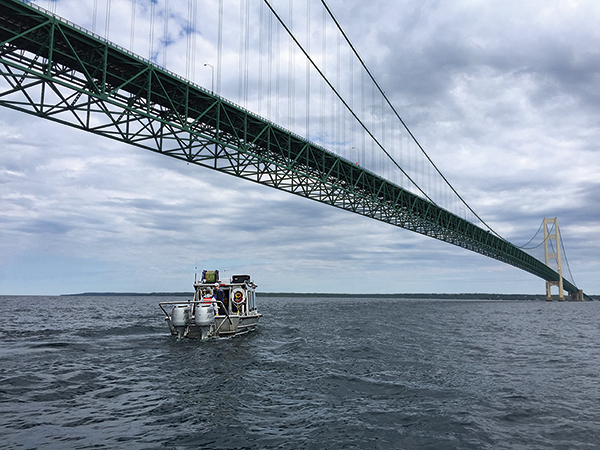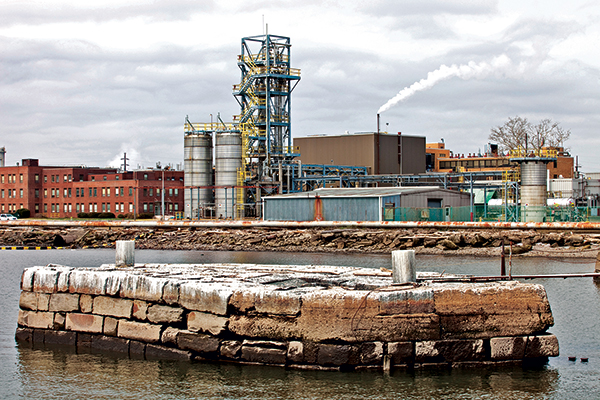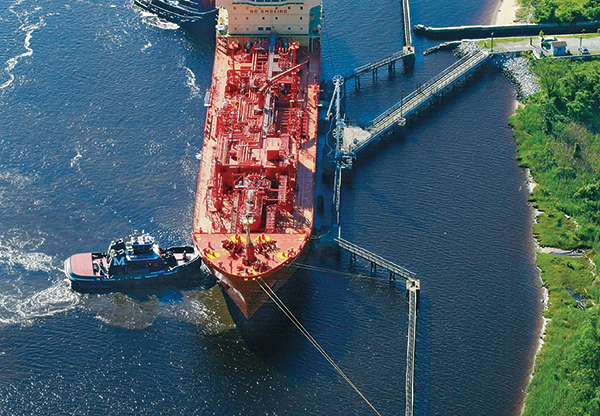Line 5, Mariner East 2 stories twist, turn into new year
Several big supply-related stories kept our attention in 2018 and will be worth watching in the new year. Here’s the latest on key projects and other topics as we prepare to usher in 2019.
Line 5
This 65-year-old light crude oil and natural gas liquids (NGL) pipeline runs under the Straits of Mackinac in Michigan and serves as a key source of propane in the state and surrounding regions. Environmental groups, Michigan residents and state officials have called for the state to take the pipeline out of service.
Addressing concerns about the aging pipeline, the state of Michigan and pipeline owner Enbridge Energy agreed to build a tunnel under the Straits that will house a replacement segment for Line 5. The estimated $500 million project doesn’t yet have a clear timeline.
There was a flurry of activity late in the year that both threatened the future of Line 5, creating propane supply uncertainty for the state and region, and later secured the future of the pipeline – at least in the short term. For the propane industry, it was a matter of educating stakeholders about Line 5’s importance and its overall impact on the propane supply picture. Obstacles remain in 2019.
Check out our full article, with reaction from Derek Dalling, the executive director of the Michigan Propane Gas Association.
Mariner East 2
This is another pipeline project that has garnered much attention from the energy industry and those on the environmental side opposed to its existence.
The Mariner East projects aim to deliver NGLs, including propane, from the Marcellus and Utica shale formations, across Pennsylvania to the Marcus Hook Industrial Complex in the southeastern part of the state. At Marcus Hook, an old, revamped refinery on the Delaware River, the NGLs can be processed, stored and shipped to local, regional and international markets.
The first phase of the project, Mariner East 1, consisted of interstate and intrastate propane and ethane service and began operations in the fourth quarter of 2014 and the first quarter of 2016, respectively. Mariner East 2, a 20-in. pipeline stretching for 350 miles, will expand the total takeaway capacity from 70,000 barrels per day (bpd) to 345,000 bpd for interstate and intrastate propane, ethane and butane service.
Energy Transfer LP announced on Dec. 29 that Mariner East 2 is now in service.
The Mariner East 2 pipeline will contribute to the U.S. propane export boom, as product shipped from processing plants in Ohio, across West Virginia and Pennsylvania, will head to overseas markets from the Marcus Hook terminal.
With NGL production strong, U.S. LP gas exporters could face constrained dock capacity to move the product to market, according to energy market analyst Argus. U.S. export capacity will increase by six to eight cargoes a month with Mariner East 2 online, Argus adds.
Another part of the project, the 16-in. Mariner East 2X, is expected to enter service in late 2019, adding another 250,000 bpd of takeaway capacity.
Propane exports and your guide to supply
We asked propane suppliers recently about what they thought were the biggest issues impacting the propane supply picture on a national or regional level. Concerns over how U.S. exports can impact domestic supply received the most attention.
Propane Resources told us: “Production rates have surged over the past few years to support our role as a global power in LPG exports. The better we as an industry understand our role as an exporter and the effect that role plays on our domestic supply infrastructure and price structure, the better we can prepare and position ourselves to manage the steep swings in prices and volatility. While production is strong, we need to see production rates continue to increase in order to support new pipeline and export terminal projects in the near future.”
Don’t forget to check out our January issue, which features our annual Suppliers Guide. The guide is a comprehensive listing of the industry’s top propane sources to help propane retailers with their supply-planning decisions. You’ll also receive more perspectives from suppliers, like this one from Propane Resources, to help boost your knowledge of the changing supply scene.
Finally, please feel welcome to reach out to us in the new year. We’re always interested in hearing about your operations and possibly sharing your stories in the magazine. Contact me at 216-706-3748 or email brichesson@northcoastmedia.net.
Happy New Year!



















